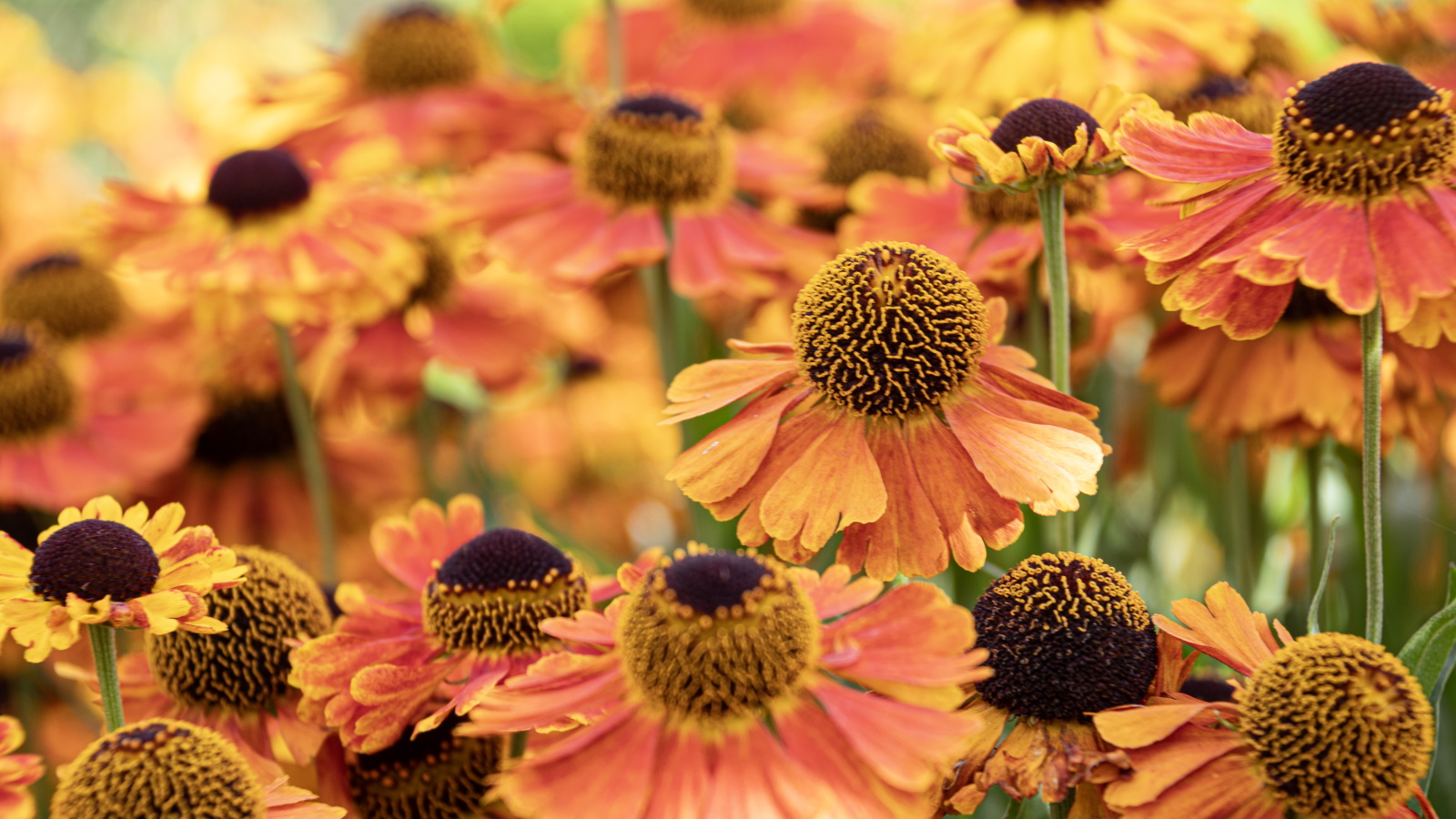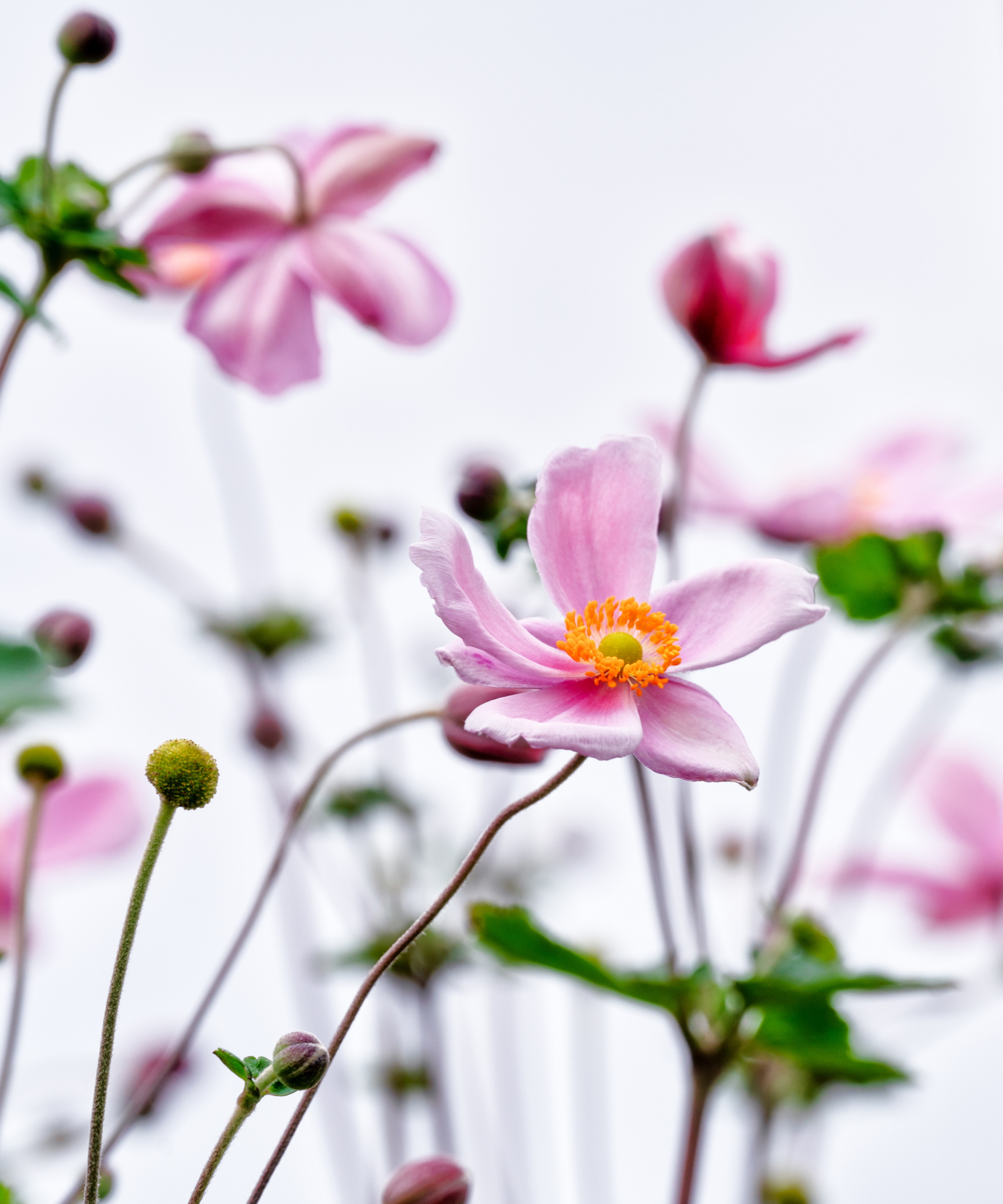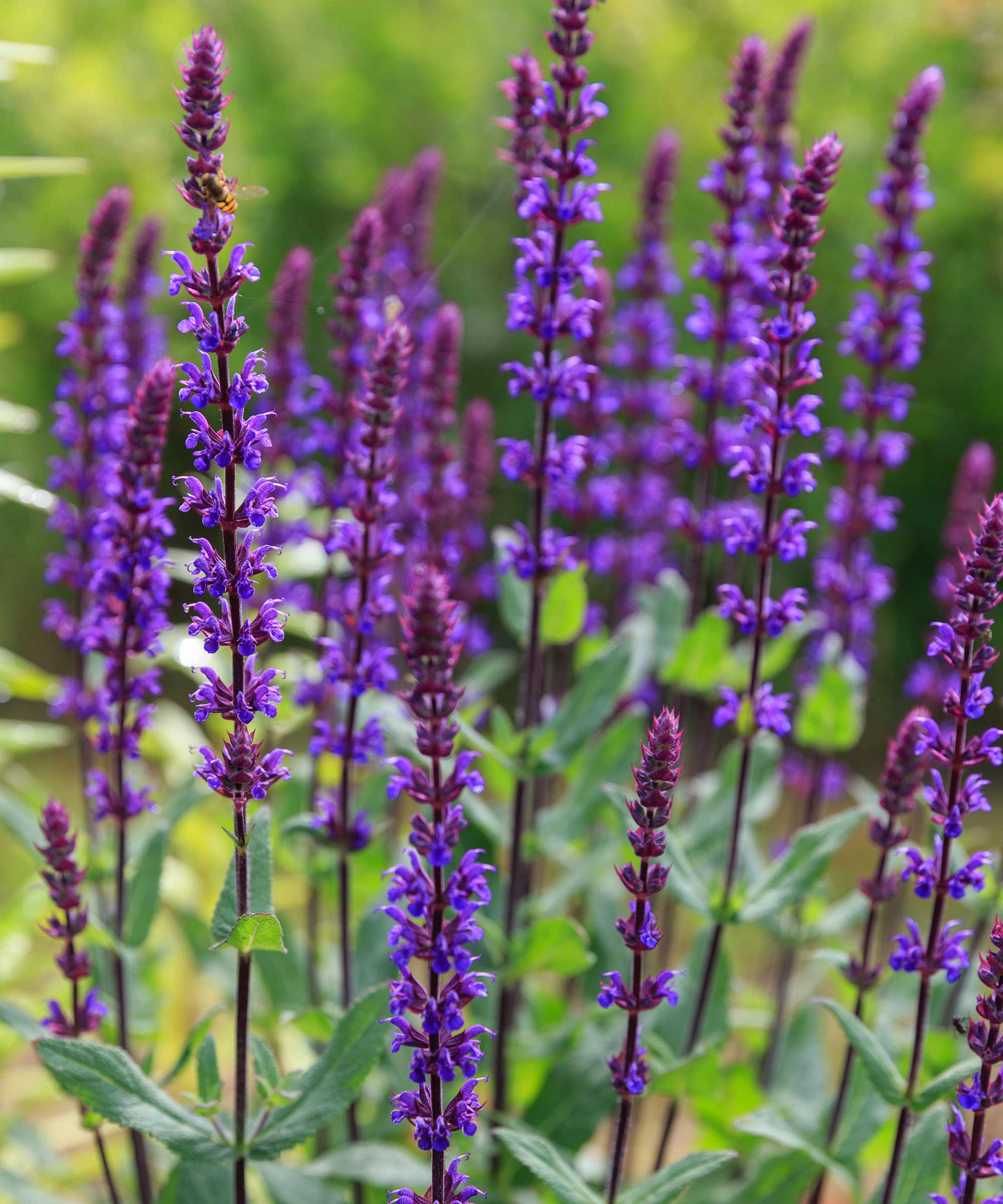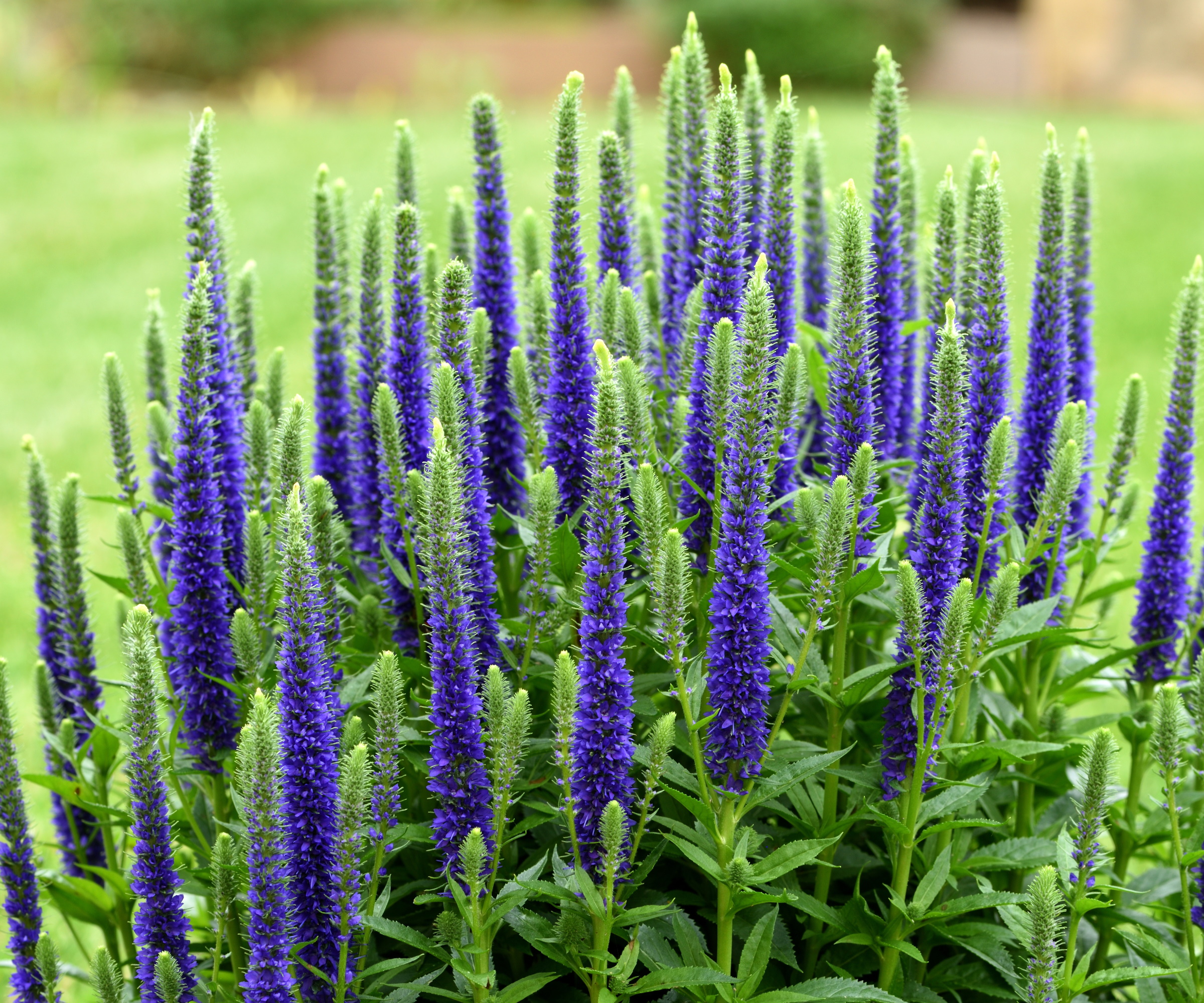14 flowering plants that regrow every year – for smart, sustainable gardening
Plant once and enjoy glorious blooms year-on-year with these perennial delights


Is there anything better than a garden that does the work for you? Well, if you love to see flowering plants in your backyard, it makes sense to include perennials in your planting schemes. Perennials are shrubs and flowering plants that regrow every year. They are often low maintenance plants, and reward you with yearly color and texture for very little effort.
Unlike annuals, which require sowing from seed every year, perennial plants die back in the winter. Their roots hibernate in the soil, conserving energy until the spring when shoots magically re-emerge and they grow into fresh, new plants. Essentially, perennials are flowers that bloom every year.
Flowering perennials come in so many different flower varieties, such as evergreen climbers, drought tolerant plants and bulbs. Indeed, some of the best perennials can also provide long-lasting color and interest in the garden. Plus, once they are established in your yard, they get stronger and often much bigger. Pruning is a good idea to keep these plants in check, and you can of course take cuttings from perennials - this time of year is ideal - to create even more plants for free.
Because we love hard-working perennials so much, we’ve created a list of the 14 best flowering plants that regrow every year, based on their style, shape, longevity and ease of growing, so you can enjoy maximum yearly blooms with minimum effort.
14 of the best flowering plants that will regrow every year
Once established, these charming perennial plants will do the hard work for you, giving you glorious flowers every year.

1. Alchemilla Mollis
- Best for: Edging a path or border
- Height: 18in
- Hardiness zones: 2-8
Also referred to as 'lady’s mantle', Alchemilla Mollis has become a hugely popular choice among garden designers in recent years for its abundance of zesty lime flowers and soft, fan-shaped leaves. Frothy clouds of flowers sit atop fairly short stems, making it a wonderful plant for ground cover, and one of the best front yard plants when used to edge a path, raised bed or border.
Alchemilla Mollis pairs very well with the purple shades of verbena, providing a pleasing contrast to its statuesque stems. Native to southern Europe, plants will tolerate most soil types, however be warned it is a voracious self seeder and may need some attention if it starts appearing where you’d rather it didn’t.
Design expertise in your inbox – from inspiring decorating ideas and beautiful celebrity homes to practical gardening advice and shopping round-ups.
Alchemilla Mollis looks particularly pretty after a rain shower, when small, glistening droplets of water can be seen all over its scalloped foliage. It also works well as a cut flower, especially if teamed with peach and lilac blooms.

2. Astilbe
- Best for: Shaded spots
- Height: Up to 4ft
- Hardiness zones: 3-9
Astilbe's elegant, feathery blooms and fern-like foliage are a glorious sight in any garden. Flowering from late spring and throughout summer, it comes in magenta, burgundy, pastel pink and white, and is sometimes referred to as ‘false goat’s beard’. Astilbes like acidic soil and are found naturally in shaded spaces, often near water, so it’s a good idea to recreate these conditions as far as possible to give your plants the best chance of producing their stunning blooms.
These flowers that bloom every year are heavy feeders, so try to fertilize them twice a year with an organic compound in spring and a high nitrogen fertilizer in fall. Astilbes can take a little longer than some perennial plants to establish, but once happy they can spread quickly. Butterflies are attracted to their arrow-like flowers, and if you’re considering what to plant with your hydrangeas, Astilbe can work really well.
We love Astilbe 'maggie daley', available at Nature Hills, for its pink-purple flowers and bronze foliage.

3. Black Eyed Susan
- Best for: Pollinators
- Height: Up to 47in
- Hardiness zones: 3-9
Black Eyed Susans, also known as Rudbeckia hirta, are native to North America. They produce distinctive, bright yellow and gold petals with striking black centers. They typically bloom from midsummer until the first frosts, and provided they are planted in a sunny spot, they are incredibly low maintenance.
Some cultivars can grow to more than 45in in height, making them an ideal plant to add color to the back of a border. You can cut back Black Eyed Susans hard at the base of the stems after all the flowers have faded, and they will return fresh and strong the following year.

4. Columbine
- Best for: Self-seeding and early-flowering blooms
- Height: 3ft
- Hardiness zones: 3-8
Columbine, or aquilegia, is a spring-flowering perennial. Its does best in part-sun, part-shade, and will give beautiful interest in your garden before the louder blooms start to compete for attention.
Also known affectionately in some parts of the world as 'granny’s bonnet' for its bell-shaped flower heads atop thin stems, it gives wonderful movement to a flower bed. Columbines love to self-seed, and can also be grown successfully in containers. There are a huge variety of Columbine seeds available to buy at Walmart.
Once planted, aquilegias can sometimes take a couple of years to bloom, explains gardening expert John Negus. 'Normally, when this plant is raised from seed it takes two years for flowers to appear,' he says. ' Aquilegias usually only flower when the plants are large enough. Interestingly, they are incredibly resilient to weather vagaries and happily survive long dry spells.'

5. Coneflower
- Best for: Prairie style and statement planting
- Height: 2-4ft
- Hardiness zones: 3-9
With its long flowering season, statement flower heads and attractiveness to pollinators and birds, it’s easy to see how coneflowers, or echinacea, made it onto this list of the best flowers that bloom every year. Even in winter after their bold petals have fallen, their large central seed heads remain, offering drama and structure to a flower bed.
Coneflowers are hardy perennial plants and belong to the Asteraceae or daisy family. They are native to the central and eastern US, and these days there is a vast array of coneflower varieties to choose from. Knowing when to cut back plants and how to harvest coneflower seeds will give you even more from these diligent flowers.
Our top picks are Echinacea Sombrero 'Balsomador', for its fiery pumpkin hues, and the statuesque Echinacea purpurea 'Ruby Star', both available to buy from Nature Hills.

6. Helenium
- Best for: Adding an unusual touch to your flower beds
- Height: 3-5ft
- Hardiness zones: 3-8
With their masses of dainty, fiery red, orange and yellow petals and dark centers, Helenium - or sneezeweed as it is commonly known - are a unique combination of whimsy and splendor; their presence in a garden will not go unnoticed.
They are native to the US and Canada, and their smaller flower heads make them a lovely fall flower for pots. Some of the taller varieties may require staking in the summer when they reach full height. They enjoy moist soil and will thrive in full sun. You can pinch out the plants in spring to encourage branching, and get more flower heads on each plant.

7. Hydrangea
- Best for: Structure and cut flowers
- Height: Up to 12ft
- Hardiness zones: 3-9
There are a myriad varieties and cultivars of hydrangea plants to choose from, all in different colors and flower shapes - from lacecaps to paniculatas. These shrubby plants grow large and loud in the garden, with bombastic flower heads that demand center stage. They work in borders and as informal hedging, and can even thrive in pots.
Hydrangeas prefer shady conditions to full sun. If they are looking a little wilted after a hot day, remember to water them from the top as well as at their roots, because they drink from their large flower heads. It’s important to know when to prune hydrangeas - and how to prune them - to ensure you don’t restrict next year’s growth. The right time can depend on the type of hydrangea you have in your yard. There are also steps you can take to winterize them, to protect them from snow and frost.
A favorite of ours is Hydrangea paniculata ‘limelight’, available at Perfect Plants, with its cone-shaped, acid green flowers, which turn to ivory and pink in the fall. It is a true showstopper.

8. Japanese Anemones
- Best for: Creating privacy and late-flowering blooms
- Height: 4ft
- Hardiness zones: 5-8
These late-flowering herbaceous perennials love partial shade, and tend to thrive beneath trees or tall hedges. Growing to lofty heights themselves of up to 4ft, they are a great choice if you’re looking to add fall plants for privacy to your planting schemes.
Once established, Japanese anemones can multiply fast, developing new shoots from their roots. Plants can be easily propagated at this time of year to thin out dense areas. This is done by root division: digging up a plant and dividing the rootball using a sharp spade to create new, individual plants.
We love the Anemone x 'Whirlwind' at Nature Hills, for its breathtaking white and yellow blooms.

9. Lavender
- Best for: Harvesting
- Height: Up to 24in
- Hardiness zones: 5-9
This ancient, fragrant herb is an all-round wonderful addition to any yard, large or small. You can spend hours watching the bees buzzing around its purple flowers in summer. Then in the fall cut back where you see new foliage emerging, and harvest the flowers for use in baking, soap, room sprays, essential oils or simply hang dried decorative bunches in your home. You can of course harvest the seeds to create even more plants for next year. Its evergreen foliage provides year-round color and coverage in the garden.
Lavender will grow in poor quality soil, and aside from pruning requires very little care and attention. Most varieties are drought-tolerant and it grows very well in pots too. Early fall, or mid-to-late spring are the best times to plant lavender, and cuttings can also be taken in fall.
One of our favorite varieties is Lavandula angustifolia 'Silver Mist', which is available at Nature Hills.

10. Peonies
- Best for: Blousy blooms
- Height: 2-3ft
- Hardiness zones: 2-8
An absolute favorite as a cut flower, garden-grown peonies may be fleeting, but they are worth it for their voluptuous, heavily scented, and romantic blooms. Bare root herbaceous peonies are best planted in fall and like full sun. It’s a good idea to add organic matter to your soil before planting, and make sure they have good drainage. Also remember to fertilize peonies at the right time for optimum blooms.
When planting, don't put them too deep into the soil, as this could cause fewer flowers to appear, says John Negus. 'The buds emerging from the crown should be just below the soil surface. Remember this when applying a layer of mulch and do not cover the crown of peonies,' he says.
Blooming in May and June, peonies can sometimes attract ants owing to a sticky secreted by their flower buds. If cutting to arrange in the home, simply rinse under cold water to ensure no ants remain on the stems.

John has been a garden journalist for over 50 years and regularly answers readers' questions in Amateur Gardening magazine. He has also written four books and has delivered many talks over the years on horticulture.

11. Salvia
- Best for: Bees
- Height: Up to 4ft
- Hardiness zones: 3-9
It’s impossible to look at Salvia in the summer months without seeing the uplifting sight of bees and butterflies eagerly buzzing around its tubular flower spikes. Growing these intensely colorful flowers that are nectar-rich will pay dividends, as they can bloom for months on end, especially if you keep up the dead heading. The foliage is aromatic and attractive, and like lavender they can also grow on poor soil.
Salvias enjoy full sun, and would work well in a coastal or Mediterranean planting scheme. If you live in a colder climate, prune salvias in the spring rather than fall, as the foliage will give the plants some added protection from frost over winter.
We love Salvia nemorosa 'Blue Marvel', available at Nature Hills, for its intense color and tolerance to heat and cold.

12. Scabious
- Best for: Adding movement and texture to flower beds
- Height: 24in
- Hardiness zones: 3-9
Pincushion flower, or Scabiosa to give this plant its Latin name, has everything going for it. It enjoys full sun, well drained, fairly alkaline soil, and can be planted out in spring or fall. It is traditionally a meadow-like flower - at home in a cottage garden planting scheme - however, it could work equally well in contemporary borders teamed with tall, structured grasses such as miscanthus and Mexican feathergrass.
It is available in a vast range of colours, from white and lemon to lilac, magenta and deep burgundy. You can prolong its flowering season by regularly deadheading the spent flowers, to encourage new ones to bloom. Scabious is a fairly hardy perennial, however in colder zones you can apply a layer of mulch around the base of the plant after cutting back in the fall to help protect it through the winter.

13. Veronica
- Best for: The back of borders
- Height: Up to 30in
- Hardiness zones: 3-9
Veronica typically produces summer-long blooms made up of tiny, star-shaped flowers clustered on a tapered spike. Commonly known as speedwell, Veronica flowers are easily recognisable with their tall spikes in various shades of blue, purple, pink, or white. They are not too fussy about where they are planted, but do like good drainage. They are fairly disease-resistant too, making them delightfully low maintenance.
Native to Northern Europe and Asia, one of our favorite varieties is Veronica spicata ‘icicle'. With its towering white spires, it would certainly add a touch of drama to your border.

14. Yarrow
- Best for: A wildflower look
- Height: 36in
- Hardiness zones: 3-8
Yarrow - or achillea as it is also known - is an ideal plant if you’re looking to create a wildflower vibe in your backyard. With its feathery foliage and flat tops (comprising of many miniature flower heads all clustered together), it is a wonderfully welcoming plant for pollinators and insects. It comes in a range of beautiful shades, from white and pale pink to fiery orange, rust and yellow. The darker shades work really well as dried flowers, holding their autumnal colors well.
Yarrow enjoys full sun and will thrive in warmer, dryer climates. It is a great choice if you’re looking for drought-tolerant plants, but will not survive very long in water-logged soil. Planted in the right place, it is fairly low maintenance and will come back stronger every year.
FAQs
When is the best time to divide perennial plants?
The best time of year to divide perennial plants is in the fall. You could definitely add this to your fall gardening checklist for jobs to do this month. This is usually done by digging up a clump of plants and breaking up the root ball either by hand or using a sharp spade. Plants usually benefit from being divided every three to four years.
What kind of flower blooms every year?
Flowers that bloom every year are known as flowering perennials. There are, however, some perennials that don't flower at all, but rather dieback in winter and regrow with new foliage in the next season. There are flowering perennials for every US hardiness zone, and it's important to choose ones hardy to your local region to ensure they return next year.
In comparison, annuals are plants that only have one growing season. After flowering they die off, and you would need to sow new seed to grow them again the following year.
It’s hard to beat the excitement of seeing new shoots emerging from the soil in spring, especially if you know what’s coming. As you can see from our round-up, there is an utterly wonderful selection of perennial flowers to choose from, if you want to see your plants returning year-on-year. These are some of our favorites, but there are so many more of the best perennials to discover and nurture.

Rachel is a gardening editor, floral designer, flower grower and gardener. Her journalism career began on Country Living magazine, sparking a love of container gardening and wild planting. After several years as editor of floral art magazine The Flower Arranger, Rachel became a floral designer and stylist, before joining Homes & Gardens in 2023. She writes and presents the brand's weekly gardening and floristry social series Petals & Roots. An expert in cut flowers, she is particularly interested in sustainable gardening methods and growing flowers and herbs for wellbeing. Last summer, she was invited to Singapore to learn about the nation state's ambitious plan to create a city in nature, discovering a world of tropical planting and visionary urban horticulture.